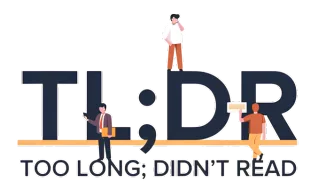Digital finance often moves at a dizzying pace. Yet, some shifts happen quietly, almost imperceptibly, until you realize their true weight. Visa, a name synonymous with global payments, just made one such move. It significantly expanded its stablecoin settlement platform.
- Visa’s expansion into stablecoin settlement marks a significant shift in traditional finance, embracing onchain payment infrastructure.
- The platform now supports four stablecoins, including PYUSD and EURC, and spans four major blockchain networks, enhancing payment options.
- This move is driven by regulatory clarity and market demand, with stablecoins offering faster, cheaper international transactions.
This isn’t a splashy headline about a new meme coin. This is a foundational change. It signals a deeper commitment from a traditional finance giant. They are now embracing the onchain payment infrastructure.
The Expanding Reach of Digital Payments
Visa first tested the waters with Circle’s USDC in 2021. That was a cautious pilot. It was a single toe dipped into the vast ocean of crypto. Now, the company has taken a much bolder step. They’ve brought in more digital currencies and more digital highways.
Three new stablecoins now join the settlement platform. There’s PayPal’s PYUSD, a digital dollar. Then comes Global Dollar (USDG), issued by Paxos. And for those who prefer their digital cash in euros, Circle’s EURC is now on the list. So, Visa now supports four stablecoins: USDC, PYUSD, USDG, and EURC. It’s a growing family of digital assets.
But the story doesn’t stop with the coins. It’s also about the networks they can travel on. Visa has added Stellar and Avalanche to its platform. These join Ethereum and Solana, which were already in use. This means Visa’s stablecoin infrastructure now spans four major blockchain networks. It’s like building new, faster roads for digital money to travel.
This expansion offers real benefits for Visa’s partners. Businesses can now settle transactions using dollar-backed stablecoins. Or, with EURC, they can use euro-backed ones. This runs right alongside Visa’s existing treasury system. That system already handles payments in over 25 traditional currencies. It gives partners more ways to move funds. It makes cross-border transactions simpler. It also helps bridge different digital chains.
Rubail Birwadker, Visa’s global head of growth products and strategic partnerships, spoke plainly about this. He said Visa is “building a multi-coin and multi-chain foundation to help meet the needs of our partners worldwide.” He added a clear vision: “We believe that when stablecoins are trusted, scalable and interoperable, they can fundamentally transform how money moves around the world.” That’s a strong statement from a company that knows a thing or two about moving money.
Why Now? Regulatory Clarity and Market Demand
This significant expansion didn’t just appear out of thin air. It arrived just weeks after a key legislative moment in the U.S. Congress passed the GENIUS Act. President Trump signed it into law. This new law provides much-needed clarity for stablecoins. It also sets guidelines for banks. It helps them build digital payment infrastructure.
For a long time, stablecoins operated in a kind of legal twilight zone. Were they just digital tokens? Or did they count as money, or even securities? The GENIUS Act begins to answer these questions. It offers a framework. This framework gives large corporations like Visa more confidence. They can now expand their digital offerings without fear of sudden regulatory surprises. It’s like finally getting a clear set of rules for a game everyone wants to play.
The market itself also plays a big part in this timing. There’s a clear and growing demand for stablecoin use. Developers want them for new applications. Banks see their potential for faster, cheaper transactions. Merchants want simpler ways to handle digital payments. Visa says this rising demand drives the need for a more flexible settlement layer. It makes perfect sense. If your customers want to pay with digital assets, you need to be ready to accept them.
Stablecoins are digital currencies pegged to a stable asset. Most often, this is the U.S. dollar or the euro. This peg keeps their value steady. It avoids the wild price swings often seen with other cryptocurrencies. Think of them as digital cash. They offer the speed and low transaction costs of crypto. They do so without the volatility. This stability makes them very attractive for everyday use. It also makes them ideal for international payments.
Some analysts hold a very optimistic view on the future of stablecoins. They project the market could grow significantly. From roughly $273 billion today, it might swell to over $2 trillion in the coming years. That’s a staggering increase. It highlights the potential for these digital assets to become a common part of our daily financial lives. It suggests a future where digital dollars and euros are as common as their physical counterparts.
The Future of Money Movement
So, what does this all mean for you, the person sipping coffee and reading this? Perhaps not much will change tomorrow morning. But this move by Visa lays important groundwork for the future. Imagine a world where sending money across continents happens in seconds. It could cost mere pennies. This is the core promise of stablecoins. Visa is building the digital pipes for that very future.
Visa isn’t stopping at just settling payments with stablecoins. They are also working with card issuers. Their goal is to bring stablecoin-linked payment products to market. This means you might one day use a debit card. That card could draw funds directly from your stablecoin balance. It’s a tangible step in blending the traditional financial world with the digital one. It bridges the old and the new.
This isn’t a small startup experimenting with blockchain. This is Visa. They process trillions of dollars in transactions each year. When a company of this scale makes such a move, it sends a clear signal. It tells the financial world that stablecoins are serious business. They are not just a niche interest for crypto enthusiasts or a passing fad.
The integration of EURC, the euro-backed stablecoin, is particularly telling. It shows a truly global perspective. It’s not just about the U.S. dollar. It’s about making digital payments accessible for different major currencies. This expands the reach of stablecoins far beyond American borders. It makes them more useful for international trade and commerce.
Consider the global economy. Moving money across borders can be slow. It often involves multiple banks and fees. Currency conversions add another layer of cost. Stablecoins offer a faster, cheaper alternative. Visa’s actions suggest they believe this future is closer than many might think. It’s a quiet but powerful endorsement.
It’s a subtle revolution unfolding. It happens behind the scenes, in the digital plumbing of global finance. But its effects could be profound. It could change how businesses pay their suppliers. It could change how individuals send money home to their families. It could even change how you pay for your next coffee. The digital rails are being laid. We are watching a major player prepare for a new era of money movement.

















